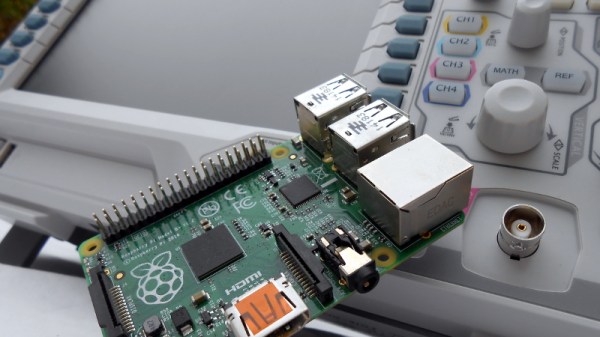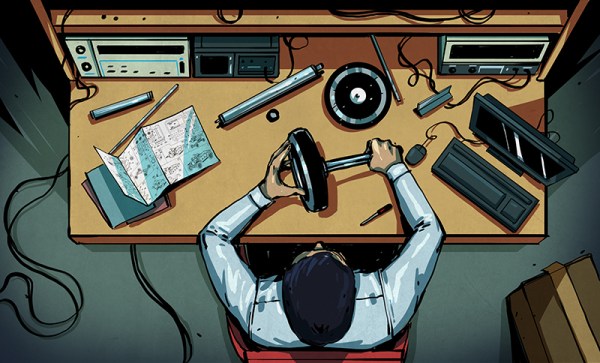Would you use your tech prowess to cheat at the Pinewood Derby? When your kid brings home that minimalist kit and expects you to help engineer a car that can beat all the others in the gravity-powered race, the temptation is there. But luckily, there are some events that don’t include the kiddies and the need for parents to assume the proper moral posture. When the whole point of the Pinewood Derby is to cheat, then you pull out all the stops, and you might try building an electrodynamic suspension hoverboard car.
Fortunately for [ch00ftech], the team-building Derby sponsored by his employer is a little looser with the rules than the usual event. Loose enough perhaps to try a magnetically levitating car. The aluminum track provided a perfect surface to leverage Lenz’s Law. [ch00ftech] tried different arrangements of coils and drivers in an attempt to at least reduce the friction between car and track, if not outright levitate it. Sadly, time ran out and physics had others ideas, so [ch00ftech], intent on cheating by any means, tried spoofing the track timing system with a ridiculous front bumper of IR LEDs. But even that didn’t work in the end, and poor [ch00f]’s car wound up in sixth place.
So what could [ch00ftech] had done better? Was he on the right course with levitation? Or was spoofing the sensors likely to have worked with better optics? Or should he have resorted to jet propulsion or a propeller drive? How would you cheat at the Pinewood Derby?
 Fail of the Week is a Hackaday column which celebrates failure as a learning tool. Help keep the fun rolling by writing about your own failures and sending us a link to the story — or sending in links to fail write ups you find in your Internet travels.
Fail of the Week is a Hackaday column which celebrates failure as a learning tool. Help keep the fun rolling by writing about your own failures and sending us a link to the story — or sending in links to fail write ups you find in your Internet travels.





 Breakfast, a Brooklyn-based hardware firm known for creative marketing installations, unveiled their
Breakfast, a Brooklyn-based hardware firm known for creative marketing installations, unveiled their 











